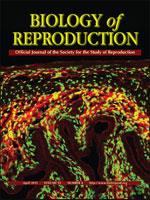During fertilization, spermatozoa make essential contributions to embryo development by providing oocyte activating factors, centrosomal components, and paternal chromosomes. Protamines are essential for proper packaging of sperm DNA; however, in contrast to the studies of oocyte-related female infertility, the influence of sperm chromatin structure on male infertility has not been evaluated extensively. The objective of this study was to determine the sperm chromatin content of bull spermatozoa by evaluating DNA fragmentation, chromatin maturity/protamination, PRM1 protein status, and nuclear shape in spermatozoa from bulls with different fertility. Relationships between protamine 1 (PRM1) and the chromatin integrity were ascertained in spermatozoa from Holstein bulls with varied (high vs. low) but acceptable fertility. Sperm DNA fragmentation and chromatin maturity (protamination) were tested using Halomax assay and toluidine blue staining, respectively. The PRM1 content was assayed using Western blotting and in-gel densitometry, flow cytometry, and immunocytochemistry. Fragmentation of DNA was increased and chromatin maturity significantly reduced in spermatozoa from low-fertility bulls compared to those from high-fertility bulls. Field fertility scores of the bulls were negatively correlated with the percentage of spermatozoa displaying reduced protamination and fragmented DNA using toluidine blue and Halomax, respectively. Bull fertility was also positively correlated with PRM1 content by Western blotting and flow cytometry. However, detection of PRM1 content by Western blotting alone was not predictive of bull fertility. In immunocytochemistry, abnormal spermatozoa showed either a lack of PRM1 or scattered localization in the apical/acrosomal region of the nuclei. The nuclear shape was distorted in spermatozoa from low-fertility bulls. In conclusion, we showed that inadequate amount and localization of PRM1 were associated with defects in sperm chromatin structure, coinciding with reduced fertility in bulls. These findings are highly significant because they reveal molecular and morphological phenotypes of mammalian spermatozoa that influence fertility.
How to translate text using browser tools
11 February 2015
Sperm Protamine-Status Correlates to the Fertility of Breeding Bulls
Sule Dogan,
Peter Vargovic,
Rodrigo Oliveira,
Lauren E. Belser,
Abdullah Kaya,
Arlindo Moura,
Peter Sutovsky,
John Parrish,
Einko Topper,
Erdoğan Memili
ACCESS THE FULL ARTICLE

Biology of Reproduction
Vol. 92 • No. 4
April 2015
Vol. 92 • No. 4
April 2015
Male infertility
PRM1
protamine
sperm chromatin
sperm DNA fragmentation




